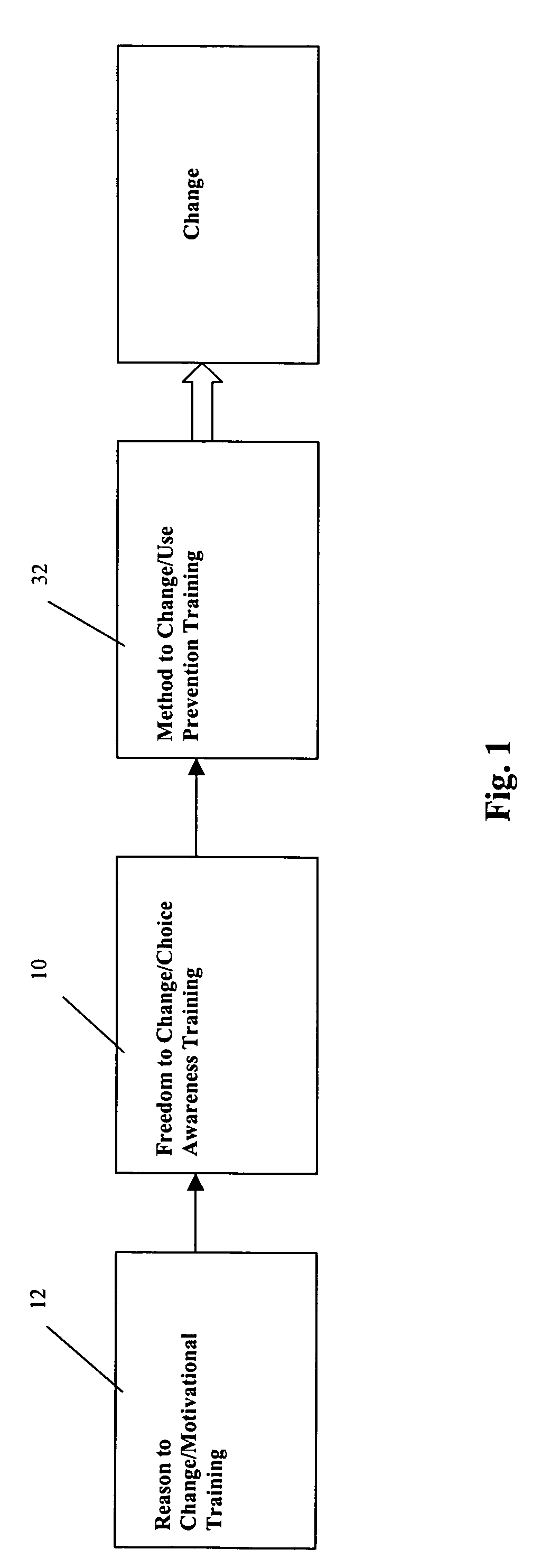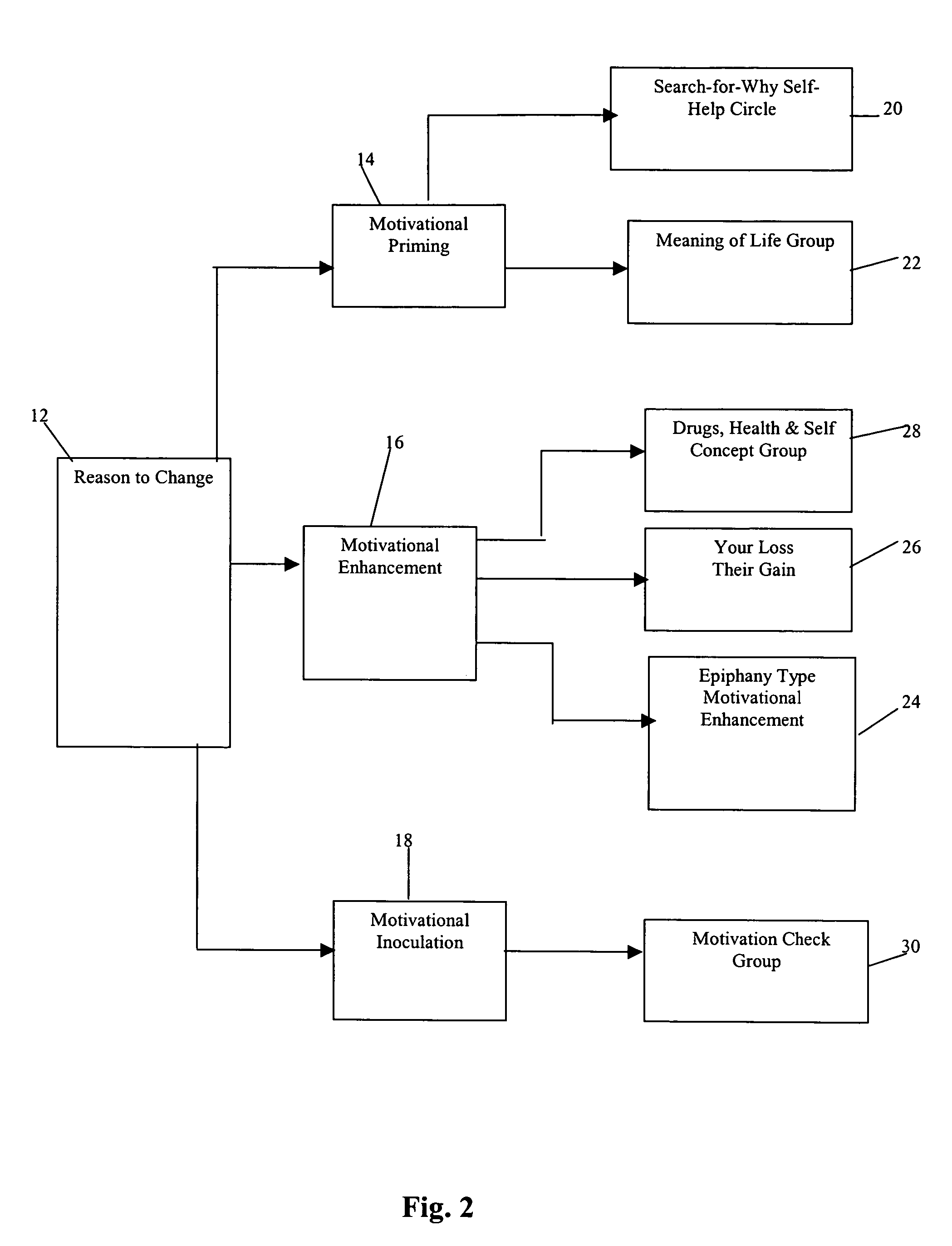Clinical curriculum for treatment of compulsive/addictive disorders based on a freedom to change approach
- Summary
- Abstract
- Description
- Claims
- Application Information
AI Technical Summary
Benefits of technology
Problems solved by technology
Method used
Image
Examples
Embodiment Construction
[0028] The present invention is a method for treatment of compulsive / addictive disorders which basically includes three steps: Training a patient to understand that they are free to change their behavior, training the patient to understand the reason to change their behavior, and finally training the patient to determine a method for changing their behavior. This training can be stated in the form of a recovery equation clinical curriculum, which, referring now to FIG. 1, can be stated as follows:
Change=Freedom to Change+Reason to Change+Method to Change
This equation will be referred to henceforth as the Change Equation, and is useful in providing an algorithm for patients to guide their progress through treatment and to help patients make sense of post-treatment failures. An important aspect of the change equation is the Freedom to Change component. It is important to train the client to believe that he or she can both initiate and maintain choice awareness, preferably before ei...
PUM
 Login to View More
Login to View More Abstract
Description
Claims
Application Information
 Login to View More
Login to View More - R&D
- Intellectual Property
- Life Sciences
- Materials
- Tech Scout
- Unparalleled Data Quality
- Higher Quality Content
- 60% Fewer Hallucinations
Browse by: Latest US Patents, China's latest patents, Technical Efficacy Thesaurus, Application Domain, Technology Topic, Popular Technical Reports.
© 2025 PatSnap. All rights reserved.Legal|Privacy policy|Modern Slavery Act Transparency Statement|Sitemap|About US| Contact US: help@patsnap.com



